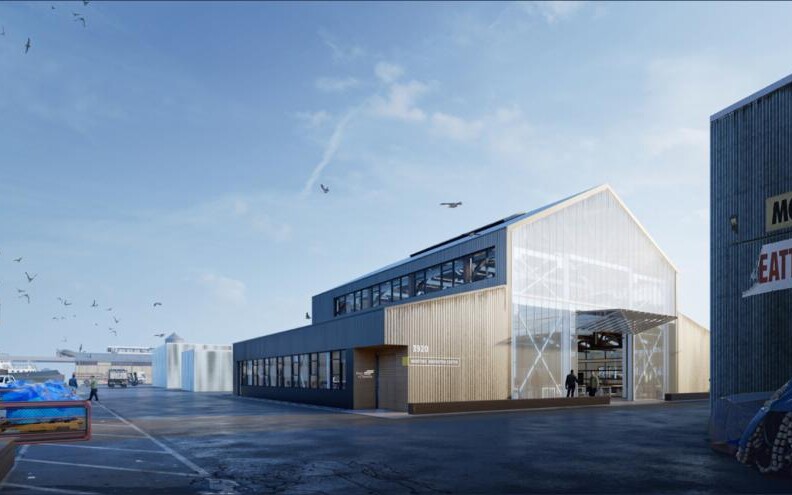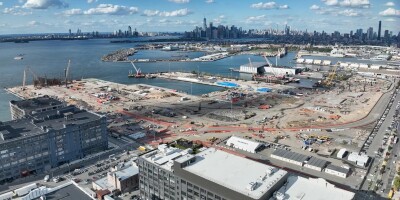A May 21 groundbreaking by the Port of Seattle marked the start of renovations to the historic Ship Supply Building at Fishermen’s Terminal, preparing it for a new role as the port’s Maritime Innovation Center.
The new facility “will serve a confluence of maritime industry needs that will bring together students and innovators from business, public agencies, and academia, along with community stakeholders to collaborate around maritime industry needs and opportunities,” according to an announcement from port officials. The port agency is partnering with firm Miller Hull to build what’s billed as a “unique architectural feature in the Pacific Northwest.”
“Today’s groundbreaking is a celebration of the Port’s substantial commitment to support innovation as a way to foster the maritime industry’s ability to sustain our region’s blue economy,” said Port of Seattle Commissioner Fred Felleman. “The transformation of the Port’s oldest asset into one that can meet the Living Building Challenge symbolizes the Port’s recognition of the maritime industry’s significance to our region’s history and future.”
“The future of the maritime industry and the ocean economy is innovative, sustainable, and equitable,” said port Commissioner Ryan Calkins. “The Maritime Innovation Center will foster an atmosphere of collaboration and innovation which will ensure that all the sectors of the maritime industry, from commercial fishing to the growing green maritime economy, have not only a home but an anchor in Seattle.”
The project is a joint venture between the port and the Miller Hull Partnership, LLP, an internationally recognized architecture, planning, urban and interior design firm.
Washington Maritime Blue an alliance of maritime stakeholders committed to developing the industry, will be the new anchor tenant for the Maritime Innovation Center. Port officials say the group’s “commitment to the development of maritime business, technology, and practices that promote a sustainable future contributing to economic growth, ecological health, and thriving communities makes Maritime Blue an ideal choice to carry out the Port’s vision for this building.”
More than $100 million in new investments are planned as part of a long-term strategic redevelopment plan to maintain docks for commercial fishermen, enhance uplands facilities, and highlight Fishermen’s Terminal’s history and legacy.
The Ship Supply Building redesign includes new wayfinding and interpretive signs, and several new art projects, using 1% of funding as part of the Port’s 1% for the Arts program.
The design and construction of the Maritime Innovation Center will follow the Living Building Challenge (LBC) framework aligned with the port’s sustainability goals. The building will generate its own energy onsite, capture its own water, and process its own waste. Some of the advanced LBC sustainability and resiliency features include:
- Net positive energy
- Salvaged materials
- Reduced carbon emissions
- Rainwater capture
- Stormwater treatment
- Gray and black water treatment
“The adaptive reuse project will maintain and respect the form and mass of the 1918 building fronting the working waterfront,” according to a summary by port officials. “Most of the building and its century-old heavy timber structure will be salvaged and reused. Miller Hull’s design will enhance the iconic pitched roof by using locally sourced and industrially appropriate materials. Sustainability will be on display with the additions of rainwater cisterns and an on-site photovoltaic array.”
"It is an honor to contribute our expertise in sustainable design to this landmark project, which will not only preserve the Ship Supply Building's rich heritage but propel the maritime industry into a more innovative and resilient future,” said Miller Hull Principal Mike Jobes, AIA.
“The Maritime Innovation Center will stand as a testament to the Port of Seattle’s and Miller Hull's shared commitment to sustainability, resilience, and community. We look forward to seeing it become a symbol of innovation on Seattle's waterfront."





